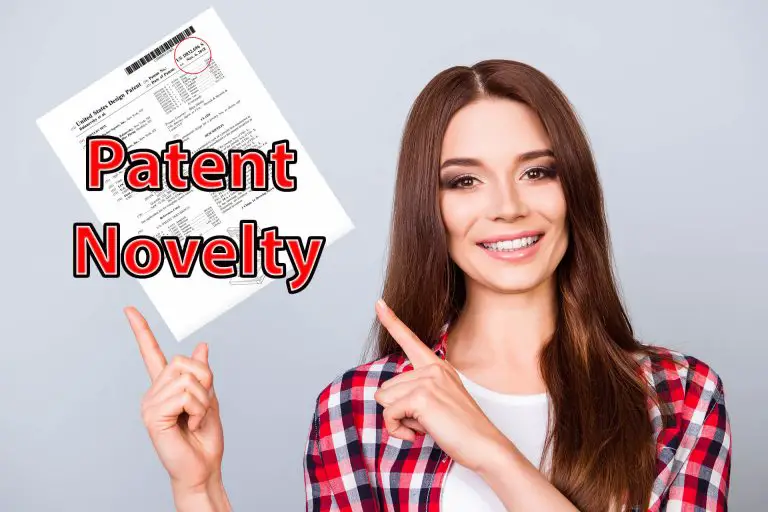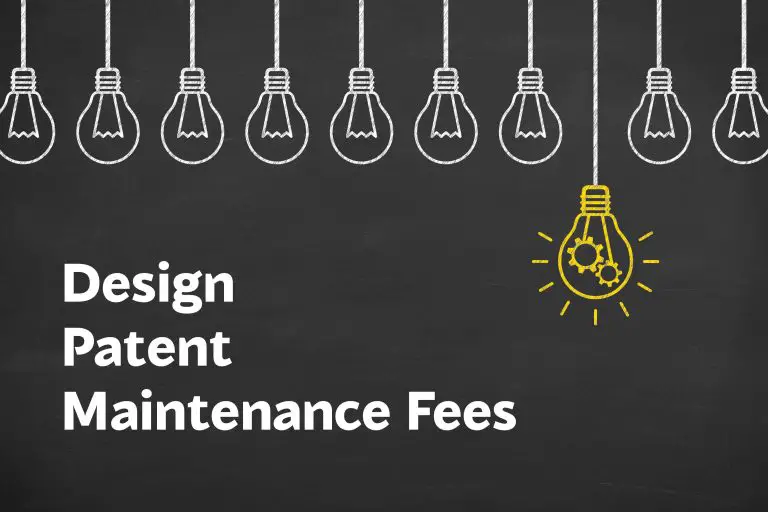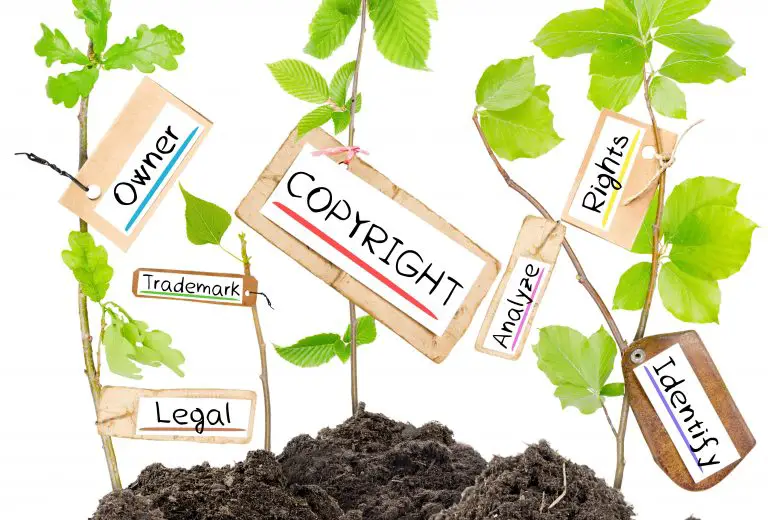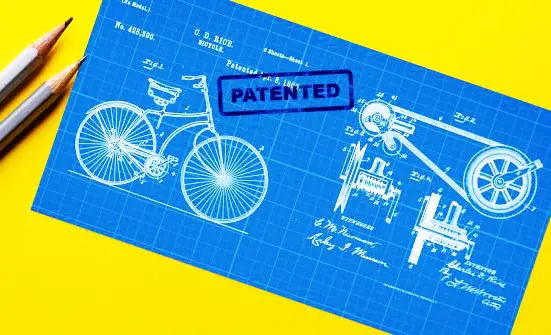Getting a Patent on Your Own
If you have an invention that you want to patent but don’t want to pay a huge amount of money to an attorney, you do have the option of patenting your invention on your own without the help of an attorney. The USPTO will even offer you help to patent your invention if you choose to do so on your own. We will now show you how you can get a utility or design patent on your own.
That said, although the patent office offers help to inventors, they do recommend that you hire an attorney to assist you with the preparation, filing, and prosecution of your patent application.
The USPTO recommends hiring an attorney because patent law is quite complex and making even small mistakes can cause trouble down the road. That said, we will provide as many details as possible to assist you with patenting your invention on your own.
That said, inventors do have the option of patenting their invention on their own without having to hire a lawyer.
Why Do Inventors Get Patents?
It’s beneficial to patent an invention because obtaining a patent on an invention allows a patent holder to control who uses, makes, sells, offers to sell, and imports the patented invention to the United States.
Said differently, patents allow their holders to profit exclusively from their invention without having to worry about others making and selling the patented invention.
Having said that, let’s dive into how you should approach patenting your invention without an attorney.
So, how exactly do you get a patent on your own? We will explain this in much detail below.
Getting a Patent on Your Own
Here are the steps that you need to take to get a patent on your own.
- Determine whether your invention qualifies for patent protection
- Determine what type of patent you need (Utility or Design)
- Keep your invention secret
- Perform a prior art search
- Prepare a patent application
- File the patent application with the USPTO
- Pay applicable patenting fees
- Track the status of your patent application
1) Determine whether your invention qualifies for patent protection
To get a patent on your own, you must have something that patent law protects. Patent law in the U.S protects new and unique inventions, processes, methods, and designs.
Utility patents protect the functional aspects of an invention or how an invention works and how it’s used. Design patents, on the other hand, protect the ornamental aspects of an invention or the appearance of an invention.
Obtaining either a utility patent or design patent allows an inventor to legally stop others from using, making, and selling the patented invention in the United States for a limited period of time.
To obtain either a utility patent or a design patent, an inventor must have an invention that has:
- Patentable subject matter
- Novelty (New)
- Nonobvious
- Useful
Patentable Subject Matter
To obtain a patent, your invention must be the type of intellectual property that patent law protects. Patent law protects new and unique inventions, machines, processes, compositions of matters, articles of manufacture, and designs. We will discuss what utility patents and design patents protect below.
Novelty
The novelty requirement requires an invention to be new. That is, an inventor must have an invention that is different from anything else that has ever been patented before and the invention must not have been publicly disclosed nor offered it for sale more than 12 months prior to filing a patent application with the patent office.
Nonobviousness
To get a patent, an inventor must show that his invention is sufficiently different from anything that’s out there so that an ordinary person skilled in the field of the invention would not believe the invention to be obvious at the time an inventor files his patent application.
If your invention is not sufficiently different, the patent office may reject your patent application for being obvious. Making small changes to existing inventions is unlikely to make your invention nonobvious.
Usefulness
The last requirement an inventor has to satisfy to get a patent is showing that the invention to be patented serves some useful purpose. Many inventors include a statement in their patent application that explicitly states the purpose of the invention. However, such a statement is not always required such as where the utility or usefulness of an invention is apparent.
Patent applications are rarely rejected on the grounds that the invention described therein is not useful.
An inventor needs to show that his invention provides the public with some identifiable benefit. For example, a new type of plastic beverage that composes more quickly, helping the environment, is enough utility to satisfy the usefulness requirement.
2) What Type of Patent Do You Need?
Utility Patents
Utility patents protect new and unique inventions, machines, processes, compositions of matter, and articles of manufacture. Said differently, utility patents protect machines, processes for making something, compositions of matter such as chemical formulations, and articles of manufacture or products that have uniquely been assembled.
Examples of things utility patents protect:
- Computer hardware
- Machines (something with moving parts such as an engine)
- Process for making a product
- Computer software
- Compositions of matter (Pharmaceuticals, supplements)
- Articles of manufacture (nail clippers, a new type of mop)
Utility patents are the most applied for patents, making up more than 92% of all applied for patents at the USPTO. Utility patents offer strong and broad protection over an invention.
Design Patents
Design patents protect new and unique designs. Said differently, design patents protect the ornamental or aesthetic aspects of an item. They protect the appearance of an invention.
Design patents are therefore different from utility patents, which protect the functional aspects of an invention and how it works.
Examples of things design patents protect
- iPhone design
- Lawnmower design
- Purse design
- Packaging design for a product
- Jewelry design
It’s good to have a design patent over an invention, but design patents are not as strong as utility patents. Utility patents offer the strongest protection because they protect how an invention works. So, even if your competitor changes the appearance of a competing invention, if it works the same way, a utility patent holder will be able to stop his competitors from using, making, and selling the patented invention.
Obtaining both utility and design patents
Some inventions qualify for both a utility patent, as well as a design patent. The utility patent protects the functional aspects of the invention, such as how it works and how it’s used and the design patent would protect the appearance of the invention or how it looks.
That said, to obtain both utility and design patent protection, an inventor needs to file a utility patent application and a separate design patent application. Filing a single application for both types of protection does not exist. Each must be applied for separately.
3) Keep Your Invention Secret
The USPTO requires inventions to be novel. The novelty requirement means that the invention must not have been publically disclosed or offered for sale prior to filing a patent application with the patent office.
The patent office offers a 12 month grace period to inventors who have publically disclosed their invention. That is, an inventor has 12 months to file a patent application with the patent office from the date he publically discloses his invention.
So, it’s best practice not to disclose your invention at all prior to filing your patent application with the patent office.
Additionally, if you’re planning on patenting your invention in other countries, you may want to keep your invention 100% secret and not publically disclose it because some countries require absolute novelty, meaning that no disclosure has ever been made.
So, keep your invention secret prior to filing a patent application.
4) Performing a Prior Art Search
Getting a patent on your invention requires an inventor to have a novel invention, this means having an invention that is completely different from any invention that has been patented in the US, as well as being different from anything that has been publicly disclosed.
To determine that an invention is different from anything that’s been patented, an inventor needs to perform a search of the USPTO database to ensure that no one else has ever patented the same invention.
Also, an applicant must perform a public search to determine that no one has publicly disclosed the invention the inventor is seeking to patent.
Performing a successful and competent prior art or patent search is an art. As such, having the experience to know where to search, as well as when to stop searching is a must to perform a successful prior art search.
Attorney performing a patent search typically start searching broad topics that relate to the invention and proceed to make their search narrower by using more restrictive keywords.
At the end of a patent or prior art search, an applicant should have a good idea of where his invention stands in terms of other similar inventions.
5) Preparing a Patent Application
When preparing a patent application, these are some of the important sections that you’ll have to include in your application.
A. Title of the Invention
A title for your invention is one of the first things you’ll encounter as you begin to prepare a patent application. The title should be as short and as specific as possible while accurately describing the invention to be patented. The title should also be fewer than 500 characters.
B. Cross Referencing Related Patent Applications
If an inventor has filed a provisional patent application before filing a (regular) non-provisional patent application and the inventor applicant wants to benefit from the earlier filing date of the provisional application, an applicant must cross-reference the application in the nonprovisional patent application.
The section that cross-references related patent application comes right after the title of the invention.
Cross-referencing a previously filed provisional patent application can be done by including the following text:
“This application claims the benefit of US Provisional Patent Application No. ##/123,456, filed on January 1st, 2020.”
According to the USPTO, an applicant may cross-reference his patent application to other applications whenever appropriate. Several cross-references may be made.
C. Statements Regarding Federally Sponsored R&D
If the federal government has sponsored the research and development of an invention, the patent application should include a statement that states what interest, if any, the government has in the invention. Also, the patent application should include the name of the US Government Agency that sponsored the research and development of the invention, as well as the contract number, if any.
D. Background of the Invention
This section should include a description of the class to which the invention relates. For example, if you’ve invented a new type of Jar, you should state that your invention falls in class 215 of “Bottles and Jars.”
An applicant should also give a brief explanation of the problems that prior art has not solved and how the applicant’s invention solves those problems. An applicant should include specific references to prior art and how his invention is different from such art.
This section should be short and to the point.
E. Brief Summary of the Invention
The summary of the invention should contain a few sentences that describe the essence of the invention, how the invention works, as well as the purpose for which the invention was created.
The brief summary of the invention should let the patent examiner, as well as the public, know what the invention is about and how it works as briefly as possible.
The Summary should be consistent with what the applicant is claiming as the invention in his patent application.
The applicant should use easy to understand and clear terms to explain the invention. An applicant should avoid using hard to understand terms, as well as legal jargon.
F. Brief Description of the Invention Drawings
You should include a brief description of each of the invention drawings that you’ve included in your patent application.
For example:
Fig. 1A shows a side view of ________________
Fig. 2B shows a top view of _______________
G. Detailed Description of the Invention
To get a patent, an applicant must include a detailed description of the invention. This description should include how to make the invention, as well as how to use the invention. The description should be made in clear and concise terms.
The invention should be described in as many details so as to allow an ordinary person skilled in the field of the invention to be able to understand how to make the invention, as well as how to use it.
If after reading the detailed description an ordinary person skilled in the field of the invention does not know how to make it and use it without much experimentation, your description is not sufficient and the patent examiner may reject your application, requiring the applicant to amend this section of the application.
H. Add Patent Claims
The claims section is where the inventor sets forth what parts of the invention he wants to protect with the patent. Patent claims set the scope of protection offered to the patent holder. Since claims are the most important part of a patent application, special attention should be given to them.
An inventor can make several patent claims in a utility patent application. However, if you’re applying for a design you can only claim one design per design patent application.
In a utility patent application, claims should start with the broadest independent claim possible, followed by other dependent claims that limit the broadest independent claims.
I. Abstract of the Disclosure
The abstract of the disclosure serves as a quick section that both the USPTO and the public can use to get a quick idea about the invention. The abstract should enable anyone who reads it to understand what’s new about the invention. It should not be more than 150 words and is usually limited to one paragraph.
J. Invention Drawings
Invention drawings should be included in every patent application where the drawings are necessary for the patent examiner and the public to understand the invention. Drawings fill in the gaps that are left by the text describing the invention.
Invention drawings must be submitted at the time an applicant files his patent application. Adding drawings later is not permitted because the addition of new matter after the filing of a patent application is prohibited by the USPTO.
K. Oath or Declaration
The Oath or Declaration Form must be filed with every patent application. In the Oath or Declaration form, the inventor must declare that he believes that he is the original inventor of the invention claimed in the patent application.
The inventor must also declare that he made or authorized the patent application to be filed with the USPTO. The Oath or Declaration must be made for both utility and design patent applications.
6) Filing a Patent Application
Once an inventor prepares his patent application, he has the option to either file a paper application or an electronic application. Filing an application electronically or online is the quickest and cheapest way to file a patent application with the USPTO. When submitting your application online, you must also pay the patenting fees to the patent office.
7) Keeping Track of Your Patent Application
Once you’ve submitted a patent application to the USPTO, it’s a good idea to track the status of your patent application using PAIR. Pair allows applicants to securely track the status of their patent application online.
It’s necessary to periodically check the status of your patent application to ensure that the USPTO has everything that they need to promptly process your patent application.
The patent office often requires changes and/or amendments to be made to a patent application and they often require those changes to be made within a certain timeframe.
As such, it is very important that an inventor promptly replies to such requests to ensure that his patent application is not delayed or abandoned due to not responding on time.
Filing a Provisional Patent Application
Some inventors choose to file a provisional patent application in lieu of filing a regular nonprovisional utility patent application to obtain an early filing date with the patent office.
Obtaining an early filing date for your invention is very important in the US because of the first to file rule that awards a patent to the person who first files a patent application for an invention.
Provisional patent applications are only available for utility patents and are not available for design patents.
Provisional patent applications are often filed because applicants don’t have to comply with many of the requirements of a regular utility patent application. Provisional applications are also much less expensive to file than nonprovisional application yet they still reserve an early filing date for your invention.
Patent Rebel Note: You should note that provisional patent applications only last for 12 months. To obtain a patent, an inventor must file a nonprovisional patent application with 12 months of filing his provisional patent application. If an inventor does not file a nonprovisional patent application that claims the early filing date of a previously filed provisional application, the early filing date is lost.
How Much Does it Cost to Get a Patent?
Patents can cost anywhere from $2,500 to $15,000+, depending on the complexity of your invention and the attorney’s fees you pay to a lawyer to prepare and file your patent application with the USPTO.
If you want to obtain a utility patent over your invention, you should expect to pay anywhere between $5,000 to $15,000+ to obtain a utility patent. The cost depends on the type of invention you’re seeking to protect, as well as the complexity of the invention. The more complex the invention, the more you’ll have to pay an attorney to prepare your patent application.
Design patents, on the other hand, typically cost anywhere from $2,500 to $3,500, which is much less than utility patents. The reason why design patents cost less is because they can only contain one invention claim (one design claim). As such, they require less work on behalf of your attorney to prepare and therefore cost less.
Can You Get a Patent on Your Own?
Yes, an inventor has the option to file a patent on his own. In fact, the patent office offers inventors who choose to prepare and file their patent application on their own, assistance with doing so.
That said, both the USPTO and Patent Rebel recommend that inventors who do not have experience patenting their own inventions to hire an attorney to assist them with the preparation and filing of their patent application.
This is so because US patent law is complex and making a mistake could cost you a patent on your invention. There are simply too many requirements and rules that an inventor has to comply with when preparing and filing a patent application. As such, it makes sense to hire an attorney to assist inventors with the patenting process.
So, if you were wondering whether you need an attorney to patent your invention, the short answer is no, you don’t need one, but hiring one can make your life much easier and means that you’ll get the best patent protection possible.
If you can’t afford an attorney, you should consider hiring a patent agent to assist you with patenting your invention. Patent agents are qualified and licensed by the USPTO to assist inventors with all steps of patenting an invention.
Patent agents can assist you with performing a prior art search, preparing your patent application, filing it with the patent office, prosecuting it, and communicating with the patent office on your behalf.
Patent agents tend to charge less than patent attorneys because they have not attended law school, but they are more than qualified to assist you with patenting your invention and dealing with the patent office on your behalf.
Why Should You Get a Patent?
You should get a patent because patents allow patent holders to control who uses, makes, sells, offers to sell, and imports the patented invention to the United States.
No one in the United States can make, use, or sell a patented invention without first having to obtain the patent holder’s permission.
This allows a patent holder to control who competes with him. This is especially true if the patent holder’s patented invention is the only invention that solves a particular problem or works a certain way.
Utility patents allow patent holders to stop others from making inventions that work or function the same way as the patent holder’s invention.
Also, if you have a new and unique design that sets your invention or product apart from others, you can protect the design of your product by also applying for and obtaining a design patent.
Design patents protect the appearance of your product and should obtain one if the appearance of your product is something that your customers look at and like about your product.
How Long Does it Take to Get a Patent?
According to the USPTO, it currently takes 24 months to obtain a utility patent and 20 months to obtain a design patent. The period of time it takes to get a patent is measured from the time you file a utility or design patent application with the patent office.
Patent Rebel Tip: If you want to patent your invention as quickly as possible, the USPTO does offer services that allow inventors to expedite the patenting process. For utility patents, you should consider using Track One. To qualify for Track One to expedite your utility patent, you need to apply for the program and pay an additional fee to expedite your application.
Also, you can expedite a design patent application using Rocket Docket, which allows inventors to expedite their design patent application by paying an additional fee and filing a request to expedite the application. Track one promises to make a decision on your utility patent application within 12 months. Rocket Docket promises to make a decision on your patent application within 12 months, as well. However, there are numerous reports that show inventors who were able to patent their invention within less than 6 months.
How to Get a Patent on Your Invention
At this point, you should know the following:
- What patents protect
- The type of patent you need for your specific invention
- The process for searching prior art
- The steps involved in preparing your patent application
- How much patenting an invention costs
- How long it takes to patent your invention
We hope this article did a great job assisting you with patenting your invention. Please note that this article is meant to offer general legal information. Patent Rebel is not your attorney, so if you need any legal advice for your specific situation, you should contact an experienced patent attorney in your jurisdiction to assist you.
That said, if you have any general questions or comments on getting a patent on your own, please feel free to leave a message in the comments section below.







